Microwave Cleaning with Lemon: Are you tired of staring into a microwave splattered with yesterday’s forgotten leftovers? I know I am! It’s a common kitchen woe, and honestly, who has the time (or the inclination) to scrub away at hardened food particles? But what if I told you there’s a simple, natural, and delightfully fragrant solution that requires minimal effort?
For generations, lemons have been celebrated not just for their zesty flavor, but also for their incredible cleaning power. Think back to your grandmother’s cleaning rituals – chances are, lemon juice played a starring role! This isn’t just an old wives’ tale; the citric acid in lemons is a natural degreaser and disinfectant, making it perfect for tackling stubborn grime.
Let’s face it, a dirty microwave isn’t just unsightly; it can also harbor bacteria and affect the taste of your food. Nobody wants their popcorn to taste like last week’s spaghetti! That’s why mastering this microwave cleaning with lemon trick is essential. I’m going to show you how to effortlessly steam clean your microwave using just a lemon, water, and a few minutes of your time. Get ready to say goodbye to stubborn stains and hello to a sparkling clean microwave – the easy way!
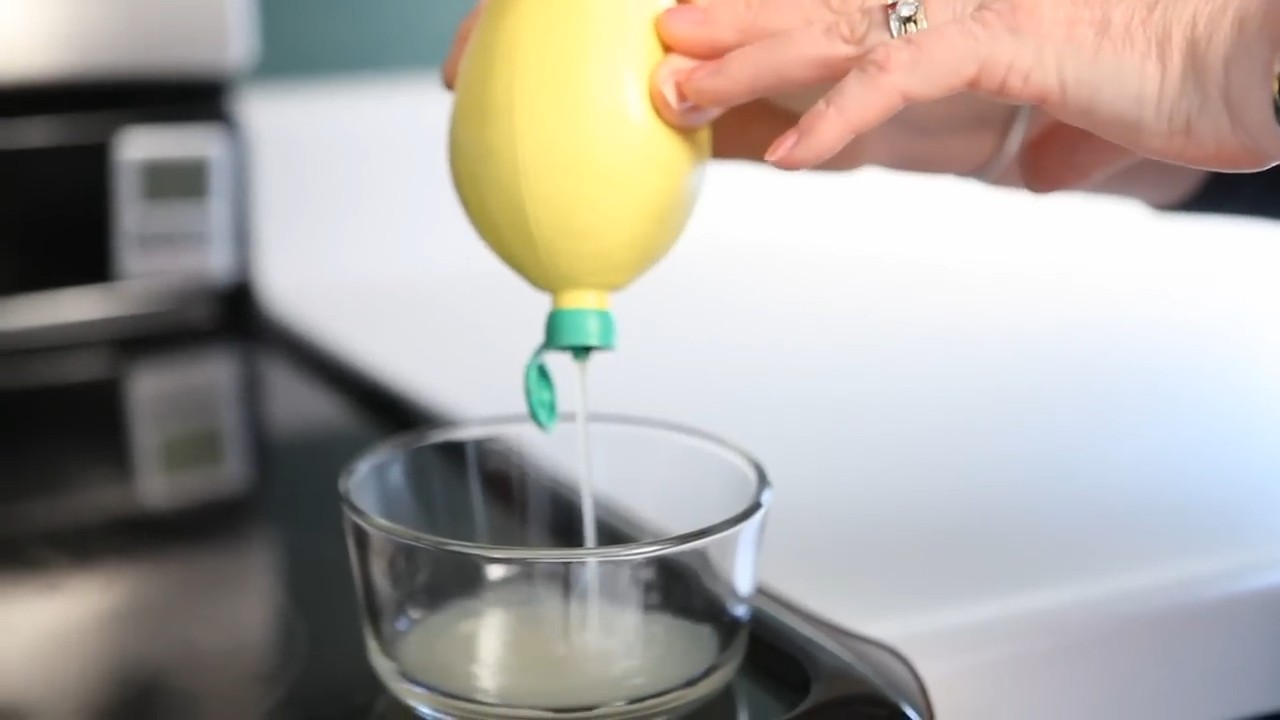
DIY Microwave Cleaning with Lemon: A Fresh and Easy Hack!
Hey there, fellow DIY enthusiasts! Are you tired of staring into your microwave and seeing a Jackson Pollock painting of splattered food? I know I was! Cleaning the microwave is one of those chores I always put off, but it doesn’t have to be a dreaded task. I’ve discovered a super simple, all-natural hack using just a lemon and some water. It’s so effective, and it leaves your microwave smelling amazing! Let me walk you through it.
What You’ll Need
Before we dive in, let’s gather our supplies. This is a pretty minimal list, which is one of the things I love about this hack!
* A lemon (preferably a fresh one, but even a slightly older one will work)
* A microwave-safe bowl
* Water
* A clean sponge or cloth
* Optional: White vinegar (for extra cleaning power)
The Magic Behind the Lemon
So, why does this lemon trick work so well? It’s all about the steam and the citric acid. When you heat the lemon water in the microwave, the steam loosens all the dried-on food particles. The citric acid in the lemon helps to break down grease and grime, making it much easier to wipe away. Plus, the lemon scent neutralizes any lingering odors in your microwave. It’s a win-win-win!
Step-by-Step Instructions
Alright, let’s get down to business! Here’s how to clean your microwave with a lemon:
1. Prepare the Lemon: First, cut your lemon in half. You can either squeeze the juice from both halves into your microwave-safe bowl or simply place the lemon halves directly into the bowl. I usually squeeze the juice first, just to get the most out of the lemon.
2. Add Water: Next, add about one cup of water to the bowl. You want enough water to create steam, but not so much that it overflows when it boils. If you’re using vinegar, add a tablespoon or two to the water at this point. The vinegar will help to further dissolve stubborn stains and odors.
3. Microwave the Mixture: Place the bowl with the lemon water (and vinegar, if using) into your microwave. Set the microwave on high for 3-5 minutes. The goal is to bring the water to a boil and let the steam fill the microwave. The exact time will depend on the power of your microwave, so keep an eye on it. You should see the water bubbling and the microwave window fogging up.
4. Let it Steam: Once the timer goes off, do not open the microwave door immediately! This is a crucial step. Let the lemon water steam inside the microwave for another 5-10 minutes. This allows the steam to really penetrate and loosen all the grime. The longer you let it sit, the easier the next step will be. I usually aim for the full 10 minutes if my microwave is particularly dirty.
5. Carefully Remove the Bowl: After the steaming period, carefully remove the bowl from the microwave. The bowl and the water will be hot, so use oven mitts or a towel to protect your hands. Be careful not to spill the hot water.
6. Wipe Down the Interior: Now comes the satisfying part! Take your clean sponge or cloth and wipe down the interior of the microwave. You’ll be amazed at how easily the food splatters come off. The steam and lemon juice have done all the hard work for you. Pay special attention to the top, bottom, sides, and door of the microwave.
7. Clean the Turntable and Roller Ring: Remove the turntable and roller ring from the microwave. Wash them with warm, soapy water. These parts often accumulate food debris and grease, so give them a good scrub. Rinse them thoroughly and dry them before placing them back in the microwave.
8. Dry the Interior: Once you’ve wiped down the entire interior, use a clean, dry cloth to dry any remaining moisture. This will help prevent water spots and keep your microwave looking its best.
9. Enjoy Your Sparkling Clean Microwave! That’s it! Your microwave should now be sparkling clean and smelling fresh. It’s amazing how such a simple trick can make such a big difference.
Tackling Stubborn Stains
Sometimes, you might encounter some particularly stubborn stains that don’t come off easily with just the lemon steam. Don’t worry, I’ve got a few tricks up my sleeve!
* Baking Soda Paste: Make a paste of baking soda and water. Apply the paste to the stubborn stains and let it sit for a few minutes. Then, scrub gently with a sponge or cloth. Baking soda is a mild abrasive that can help to lift away tough stains.
* Vinegar Power: If the baking soda paste doesn’t do the trick, try using vinegar directly on the stains. Soak a cloth in white vinegar and apply it to the stains. Let it sit for a few minutes, then scrub. The acidity of the vinegar can help to dissolve grease and grime.
* Lemon Scrub: For a natural scrubbing agent, use the lemon halves that you used to make the lemon water. Sprinkle some baking soda on the lemon halves and use them to scrub the stubborn stains. The lemon juice and baking soda will work together to lift away the grime.
Preventative Measures
Of course, the best way to keep your microwave clean is to prevent it from getting too dirty in the first place. Here are a few tips to help you keep your microwave sparkling:
* Cover Your Food: Always cover your food when microwaving it. This will help to prevent splatters and spills. You can use a microwave-safe lid, plastic wrap, or even a paper towel.
* Wipe Up Spills Immediately: If you do have a spill, wipe it up immediately. The longer you let it sit, the harder it will be to clean.
* Regular Cleaning: Make it a habit to clean your microwave regularly. Even a quick wipe-down once a week can help to prevent buildup and keep it looking its best.
Troubleshooting
Sometimes, things don’t go exactly as planned. Here are a few common issues you might encounter and how to fix them:
* Microwave Still Smells Bad: If your microwave still smells bad after cleaning it with lemon, try leaving a bowl of baking soda in the microwave overnight. Baking soda is a natural odor absorber.
* Stains Won’t Come Off: If you’re having trouble removing stubborn stains, try using a combination of the methods I mentioned earlier. You can try the baking soda paste, vinegar, and lemon scrub.
* Microwave is Too Hot to Touch: If your microwave is too hot to touch after steaming the lemon water, let it cool down for a few minutes before attempting to clean it.
Why I Love This Hack
I absolutely love this microwave cleaning hack because it’s so simple, effective, and natural. I don’t have to use harsh chemicals, and it leaves my microwave smelling fresh and clean. Plus, it’s a great way to use up lemons that are starting to get a little old. It’s a win-win for me and my microwave!
Alternative Cleaning Solutions
While I swear by the lemon method, there are other ways to clean your microwave if you don’t have a lemon on hand. Here are a couple of alternatives:
* Vinegar and Water: Mix equal parts white vinegar and water in a microwave-safe bowl. Microwave for 3-5 minutes, then let it steam for 5-10 minutes. Wipe down the interior with a clean cloth.
* Dish Soap and Water: Mix a few drops of dish soap with water in a microwave-safe bowl. Microwave for 3-5 minutes, then let it steam for 5-10 minutes. Wipe down the interior with a clean cloth.
Safety First!
Before I wrap things up, I want to emphasize the importance of safety. Always be careful when working with hot water and hot appliances. Use oven mitts or a towel to protect your hands, and be careful not to spill hot water. And always unplug your microwave before cleaning it if you’re concerned about electrical safety.
So there you have it! My go-to method for cleaning a microwave with just a lemon. I hope you found this helpful, and I encourage you to give it a try. You’ll be amazed at how easy it is to get your microwave sparkling clean and smelling fresh. Happy cleaning!
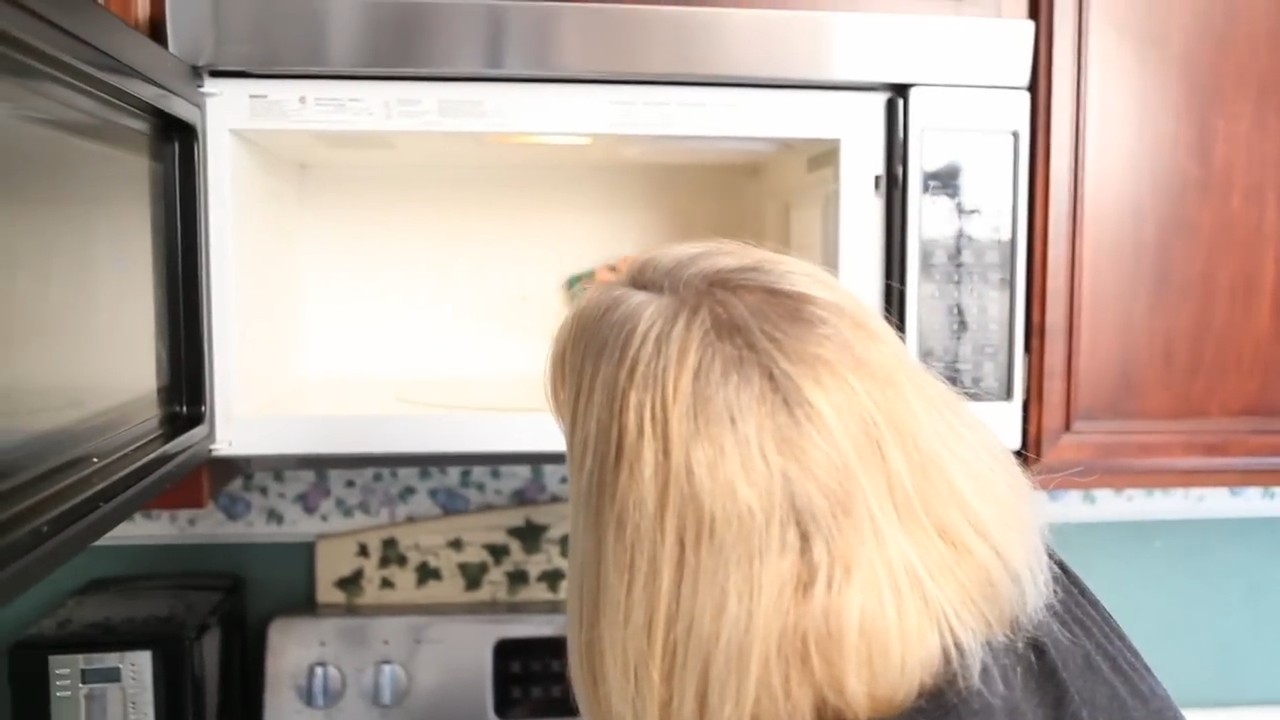
Conclusion
So, there you have it! This simple, all-natural method for cleaning your microwave with just a lemon and a little water is not just a cleaning hack; it’s a game-changer. Why spend money on harsh chemicals and elbow grease when you can harness the power of citrus to effortlessly banish splatters, odors, and grime? This DIY microwave cleaning trick is a must-try for anyone seeking a quick, effective, and eco-friendly way to maintain a sparkling clean kitchen.
Why is this method so compelling? It’s the trifecta of benefits: it’s incredibly easy, remarkably effective, and completely natural. The steam loosens stubborn food particles, the lemon’s acidity cuts through grease, and the refreshing citrus scent leaves your microwave smelling fantastic. Forget about scrubbing for hours or dealing with lingering chemical smells. This method takes just minutes and leaves your microwave looking and smelling brand new.
But the beauty of this DIY trick lies in its adaptability. While lemon is the star of the show, feel free to experiment with variations to suit your preferences and available ingredients.
Here are a few suggestions:
* Lime Power: Substitute lemon with lime for a similar cleaning effect and a slightly different citrus aroma.
* Orange Zest Boost: Add orange peels along with the lemon for an extra burst of fragrance and cleaning power. The oils in the orange zest can help dissolve stubborn grease.
* Vinegar Addition: For particularly stubborn messes, add a tablespoon of white vinegar to the water and lemon mixture. Vinegar is a powerful degreaser and disinfectant.
* Herb Infusion: Add a sprig of rosemary or thyme to the water for a subtle herbal scent that will freshen your entire kitchen.
* Essential Oil Enhancement: After the steaming process, wipe down the microwave with a cloth dampened with water and a drop of your favorite essential oil, such as lavender or tea tree, for added antibacterial and aromatic benefits.
This DIY microwave cleaning method is more than just a cleaning tip; it’s a sustainable and cost-effective way to keep your kitchen appliance in top condition. It’s a testament to the power of simple, natural ingredients and a reminder that sometimes the best solutions are the most straightforward.
We wholeheartedly encourage you to try this DIY microwave cleaning trick and experience the difference for yourself. It’s quick, easy, and the results are truly impressive. Once you’ve given it a go, we’d love to hear about your experience! Share your tips, variations, and before-and-after photos in the comments below. Let’s build a community of clean microwave enthusiasts! Your feedback will not only help others discover this fantastic cleaning method but also inspire new and innovative ways to keep our kitchens sparkling. So, grab a lemon, a bowl of water, and get ready to say goodbye to microwave messes forever!
Frequently Asked Questions (FAQ)
1. Can I use bottled lemon juice instead of a fresh lemon?
While fresh lemon is ideal for its natural oils and pulp, bottled lemon juice can be used in a pinch. However, the cleaning power might be slightly less effective. If using bottled juice, use about 2-3 tablespoons in the water. Fresh lemon provides a more potent cleaning and deodorizing effect due to its natural oils and acids.
2. How long should I microwave the lemon and water mixture?
The recommended time is typically 3-5 minutes, or until the water boils vigorously and the microwave is filled with steam. The exact time may vary depending on the power of your microwave. The key is to ensure sufficient steam is generated to loosen the grime. If your microwave is particularly dirty, you might want to extend the time by a minute or two.
3. Is it safe to microwave lemon?
Yes, it is perfectly safe to microwave lemon. Lemon is a natural food and does not release any harmful chemicals when heated in a microwave. The microwave-safe bowl is more important. Make sure the bowl you use is microwave-safe to prevent any accidents.
4. What if my microwave is extremely dirty?
For heavily soiled microwaves, consider these steps: First, wipe away any loose debris with a damp cloth. Then, microwave the lemon and water mixture for the recommended time. After steaming, let the microwave sit for an additional 5-10 minutes to allow the steam to further loosen the grime. Finally, wipe down the interior thoroughly. If necessary, repeat the process or use a non-abrasive sponge with a little baking soda for stubborn spots.
5. Can I use this method to clean the outside of my microwave?
While this method primarily targets the interior of the microwave, you can use the lemon-infused water to clean the exterior as well. Simply dip a clean cloth into the water after microwaving and wipe down the outside surfaces. Be sure to dry the exterior with a separate clean cloth to prevent water spots.
6. What type of bowl should I use in the microwave?
Always use a microwave-safe bowl made of glass, ceramic, or microwave-safe plastic. Avoid using metal containers or bowls with metallic trim, as these can cause sparks and damage your microwave.
7. How often should I clean my microwave using this method?
The frequency of cleaning depends on how often you use your microwave and how prone it is to splatters. As a general guideline, cleaning your microwave every 1-2 weeks is a good practice to prevent buildup and maintain a fresh smell.
8. What if I don’t like the smell of lemon?
If you’re not a fan of lemon, you can try using other citrus fruits like lime or orange. Alternatively, you can add a few drops of your favorite essential oil (such as lavender or eucalyptus) to the water for a different scent. Just be sure to use essential oils that are safe for use in a microwave.
9. Will this method disinfect my microwave?
While this method effectively cleans and deodorizes your microwave, it may not completely disinfect it. For thorough disinfection, you can wipe down the interior with a solution of equal parts water and white vinegar after cleaning with the lemon and water mixture.
10. What are the benefits of using this DIY microwave cleaning method compared to commercial cleaners?
This DIY method offers several advantages over commercial cleaners: It’s all-natural, non-toxic, and eco-friendly. It’s also cost-effective, as you only need a lemon and water. Additionally, it avoids the harsh chemicals and strong odors often associated with commercial cleaners. It’s a safer and healthier option for your family and the environment.
11. Can I use this method on all types of microwaves?
Yes, this method is generally safe to use on all types of microwaves, including countertop, over-the-range, and built-in models. However, always refer to your microwave’s user manual for specific cleaning instructions and precautions.
12. What if the stains are still there after wiping?
If some stains persist after wiping, try making a paste of baking soda and water. Gently scrub the stained areas with the paste using a non-abrasive sponge or cloth. Then, wipe clean with a damp cloth. Baking soda is a mild abrasive that can help remove stubborn stains without scratching the microwave’s surface.

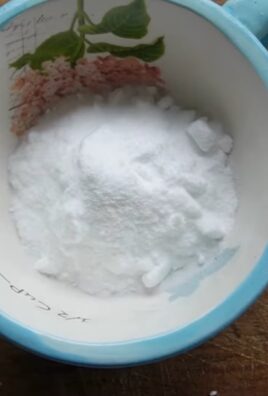
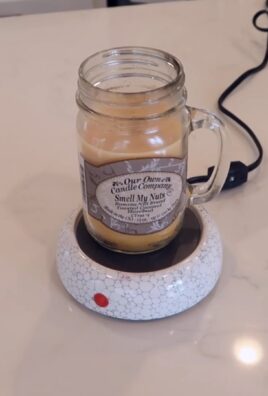
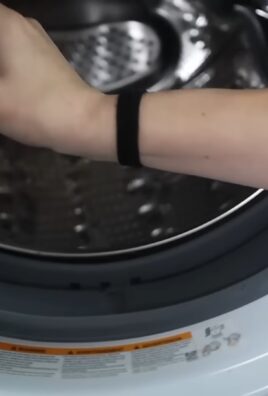
Leave a Comment